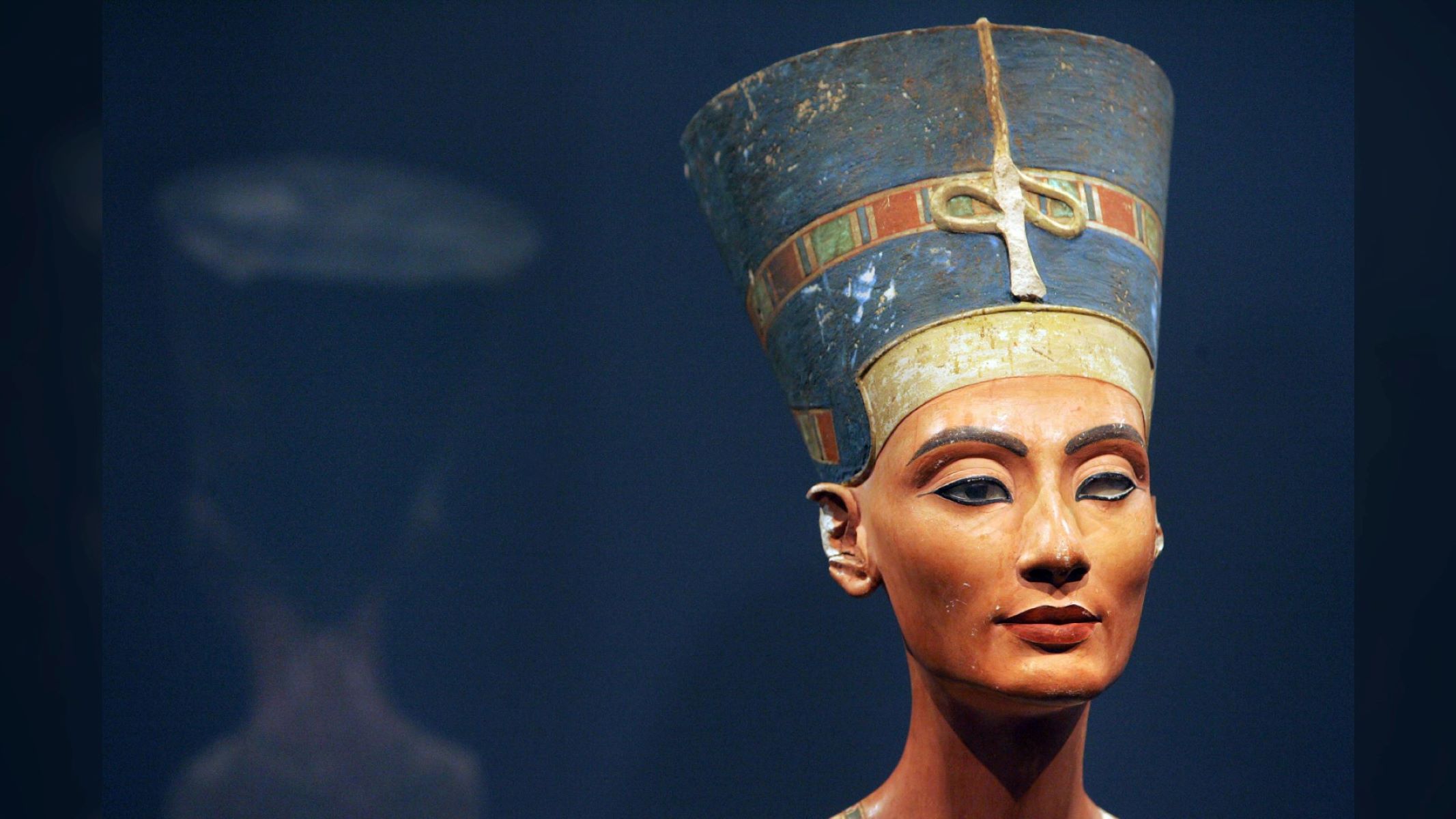
Queen Nefertiti remains one of ancient Egypt's most enigmatic and captivating figures. Known for her stunning beauty and powerful influence, she ruled alongside Pharaoh Akhenaten during a time of religious upheaval. But who was she really? Nefertiti wasn't just a pretty face; she played a crucial role in the political and spiritual life of Egypt. Her name means "the beautiful one has come," and her legacy continues to intrigue historians and enthusiasts alike. From her mysterious origins to her possible role as a pharaoh, there's much to uncover about this iconic queen. Ready to dive into 34 fascinating facts about Queen Nefertiti? Let's get started!
Key Takeaways:
- Queen Nefertiti, known for her beauty and power, played a crucial role in Egypt's religious and political spheres. Her mysterious disappearance continues to captivate historians and enthusiasts alike.
- Nefertiti's legacy endures through her impact on ancient and modern worlds, symbolizing feminine strength and allure. Ongoing discoveries and theories promise to unveil more about her mysterious life.
Queen Nefertiti: A Glimpse into Her Life
Queen Nefertiti, one of ancient Egypt's most iconic figures, continues to captivate historians and enthusiasts alike. Her life, reign, and legacy are filled with fascinating details that paint a vivid picture of her time.
-
Nefertiti means "the beautiful one has come." Her name itself suggests her renowned beauty.
-
She was the Great Royal Wife of Pharaoh Akhenaten, one of Egypt's most controversial rulers.
-
Nefertiti and Akhenaten are known for establishing the worship of Aten, the sun disk, as the primary deity.
-
Her famous bust, discovered in 1912, is one of the most copied works of ancient Egypt.
-
The bust of Nefertiti is housed in the Neues Museum in Berlin, Germany.
Nefertiti's Family and Origins
Understanding Nefertiti's background helps us appreciate her influence and role in Egyptian history.
-
Nefertiti's parentage remains a mystery, though some theories suggest she was the daughter of Ay, a future pharaoh.
-
She had six daughters with Akhenaten, each playing significant roles in the royal court.
-
Her daughters' names were Meritaten, Meketaten, Ankhesenpaaten, Neferneferuaten Tasherit, Neferneferure, and Setepenre.
-
Ankhesenpaaten, one of her daughters, later became the wife of Tutankhamun.
-
Nefertiti's sister, Mutbenret, also held a prominent position in the royal family.
Nefertiti's Role in Religion and Politics
Nefertiti wasn't just a queen; she was a powerful figure in Egypt's religious and political spheres.
-
She co-ruled with Akhenaten, often depicted in equal stature to him in art.
-
Nefertiti played a crucial role in the religious revolution that shifted worship from Amun to Aten.
-
She was often shown performing religious rituals, a role usually reserved for pharaohs.
-
Some scholars believe she may have ruled as pharaoh after Akhenaten's death under the name Neferneferuaten.
-
Her influence extended to foreign diplomacy, as evidenced by letters found in the Amarna archives.
Artistic Depictions of Nefertiti
Art from Nefertiti's era provides a unique glimpse into her life and the aesthetics of the time.
-
Nefertiti is frequently depicted wearing a unique flat-topped blue crown.
-
The Amarna art style, which flourished during her reign, emphasized naturalism and intimacy.
-
She is often shown in family scenes with Akhenaten and their daughters, highlighting her role as a mother.
-
Nefertiti's images often depict her in a powerful, almost pharaonic role, breaking traditional gender norms.
-
The famous bust of Nefertiti is believed to be a masterwork of Thutmose, the royal sculptor.
The Mystery of Nefertiti's Disappearance
Nefertiti's sudden disappearance from historical records has puzzled historians for decades.
-
Around the 12th year of Akhenaten's reign, Nefertiti's name vanished from inscriptions.
-
Some theories suggest she fell out of favor or died, while others propose she took on a new identity.
-
Theories about her possible role as pharaoh Neferneferuaten add to the intrigue.
-
Her tomb has never been conclusively identified, leading to ongoing speculation.
-
Recent DNA studies suggest she might be the "Younger Lady" mummy found in Tutankhamun's tomb.
Nefertiti's Legacy
Nefertiti's impact on history and culture remains significant, influencing both ancient and modern worlds.
-
Her religious reforms were largely undone after Akhenaten's death, but her legacy endured.
-
Nefertiti's beauty and power have made her a symbol of feminine strength and allure.
-
She has been the subject of numerous books, documentaries, and films.
-
Nefertiti's bust has become an icon of ancient Egyptian art, symbolizing the civilization's grandeur.
-
Her story continues to inspire archaeologists and historians in their quest to uncover more about her life.
Modern Discoveries and Theories
New findings and theories continue to shed light on Nefertiti's life and reign.
-
In 2015, radar scans suggested possible hidden chambers in Tutankhamun's tomb, potentially linked to Nefertiti.
-
Some scholars believe her tomb may lie in the Valley of the Kings, yet to be discovered.
-
Ongoing research and technological advancements promise to reveal more about her mysterious life.
-
Nefertiti remains a subject of fascination, embodying the allure and mystery of ancient Egypt.
The Legacy of Queen Nefertiti
Queen Nefertiti's life remains a fascinating chapter in ancient Egyptian history. Her beauty, power, and influence have captivated historians and enthusiasts alike. From her iconic bust to her mysterious disappearance, Nefertiti's story is filled with intrigue. She wasn't just a queen; she was a symbol of an era marked by religious transformation and artistic innovation. Her partnership with Akhenaten brought significant changes to Egypt, particularly the shift to monotheism. Despite the mysteries surrounding her, Nefertiti's legacy endures through art, literature, and ongoing archaeological discoveries. Her life and reign continue to inspire and challenge our understanding of ancient Egypt. As we learn more about her, Nefertiti's story reminds us of the complexities and wonders of history. Her legacy, etched in stone and memory, will undoubtedly continue to spark curiosity for generations to come.
Frequently Asked Questions
Was this page helpful?
Our commitment to delivering trustworthy and engaging content is at the heart of what we do. Each fact on our site is contributed by real users like you, bringing a wealth of diverse insights and information. To ensure the highest standards of accuracy and reliability, our dedicated editors meticulously review each submission. This process guarantees that the facts we share are not only fascinating but also credible. Trust in our commitment to quality and authenticity as you explore and learn with us.


